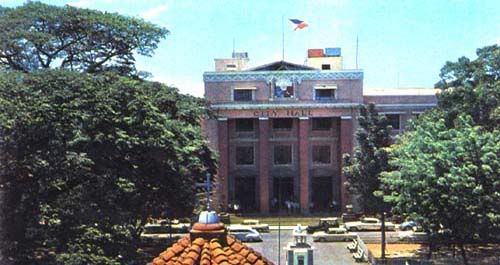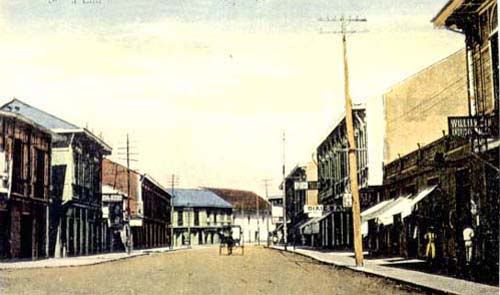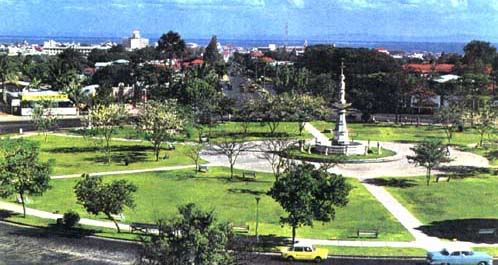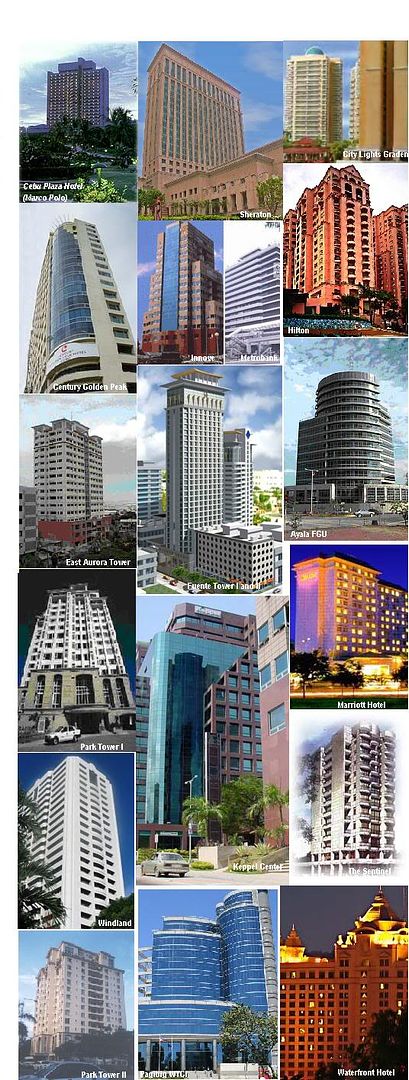Post by Kak®sA on Jan 12, 2006 13:48:19 GMT 7
naghimo ko ani nga thread para kabalo sad tong dili mga taga Cebu(labi na tong dili kaayu mga laagan....sama nako nga di hapit mag puyo sa balay  ) kon unsay naa dire sa C E B U!
) kon unsay naa dire sa C E B U!
ill begin first the History of Cebu!
Historic Cebu can be gleaned through the imposing edifice of the Castillan FORT SAN PEDRO, a triangular fort (commonly called "COTA" by Cebuanos), which was built by Don Miguel Lopez de
Legaspi, the Governor-General responsible for the Christianization of the Philippines and the colonization of Cebu in 1565.
The most famous landmark of Cebu City and in the entire country is the wooden cross made of Tindalo which has been venerated by many devotee. This CROSS, the first symbol of Christianity in the Far East, was planted by Magellan in the fishing village of ZUBU on April 7, 1521. The exact spot where this CROSS is now located at upper Magallanes, a street named after Fernando de Magallanes, the intrepid Portuguese explorer who made the great voyage of exploration under the flag of Spain.
The BASILICA MINORE DEL SANTO NIÑO, the only basilica in Far East, is another historic landmark. It is a museum in itself, it is a repository of beautiful religious images, oil pabossings of Augustinian Saints, Martyrs, and Bishop that hang in the corridors of the convent. This Basilica was the former SAN AUGUSTIN CHURCH which was ordered built by Don Legaspi and Fray Urdaneta in order to house appropriately the country's oldest religious image-the Miraculous Image of the Holy Child Jesus popularly known as "SENOR SANTO NIÑO". This famous image was discovered by one of Legaspi's soldiers in a partly burning building near the site of the present PATRIA DE CEBU.
Cebu the progressive city Southern Philippines, is historically known to be an enterprising fishing village way back in the early days of the Chou-Ju-Kua long before the Spanish expedition of Magellan came to the Philippines in 1561. Sugbu, as the village was intimately called and commerce relations with foreign merchants of Europe, Asia and even old Cathay. These merchants gave Cebu many different names as ZUBU, ZEBU, SEBU, SIBUY, and others.
Foreign traders sold their goods to the Sugbuanons who are also sold their native products to the foreigners even as some of them resorted to barter trade system. So, it is not surprising therefore that the present generation of Cebuanos could excel in the field of commerce for their forbears had instilled into them business acumen and the value of trade and industry.
source: www.cebucity.gov.ph
sunod nako i post ang mga old structures/buildings/tourist spot dire sa cebu.....
 ) kon unsay naa dire sa C E B U!
) kon unsay naa dire sa C E B U! ill begin first the History of Cebu!
Historic Cebu can be gleaned through the imposing edifice of the Castillan FORT SAN PEDRO, a triangular fort (commonly called "COTA" by Cebuanos), which was built by Don Miguel Lopez de
Legaspi, the Governor-General responsible for the Christianization of the Philippines and the colonization of Cebu in 1565.
The most famous landmark of Cebu City and in the entire country is the wooden cross made of Tindalo which has been venerated by many devotee. This CROSS, the first symbol of Christianity in the Far East, was planted by Magellan in the fishing village of ZUBU on April 7, 1521. The exact spot where this CROSS is now located at upper Magallanes, a street named after Fernando de Magallanes, the intrepid Portuguese explorer who made the great voyage of exploration under the flag of Spain.
The BASILICA MINORE DEL SANTO NIÑO, the only basilica in Far East, is another historic landmark. It is a museum in itself, it is a repository of beautiful religious images, oil pabossings of Augustinian Saints, Martyrs, and Bishop that hang in the corridors of the convent. This Basilica was the former SAN AUGUSTIN CHURCH which was ordered built by Don Legaspi and Fray Urdaneta in order to house appropriately the country's oldest religious image-the Miraculous Image of the Holy Child Jesus popularly known as "SENOR SANTO NIÑO". This famous image was discovered by one of Legaspi's soldiers in a partly burning building near the site of the present PATRIA DE CEBU.
Cebu the progressive city Southern Philippines, is historically known to be an enterprising fishing village way back in the early days of the Chou-Ju-Kua long before the Spanish expedition of Magellan came to the Philippines in 1561. Sugbu, as the village was intimately called and commerce relations with foreign merchants of Europe, Asia and even old Cathay. These merchants gave Cebu many different names as ZUBU, ZEBU, SEBU, SIBUY, and others.
Foreign traders sold their goods to the Sugbuanons who are also sold their native products to the foreigners even as some of them resorted to barter trade system. So, it is not surprising therefore that the present generation of Cebuanos could excel in the field of commerce for their forbears had instilled into them business acumen and the value of trade and industry.
source: www.cebucity.gov.ph
sunod nako i post ang mga old structures/buildings/tourist spot dire sa cebu.....



























































 turn between two lovers...
turn between two lovers... 






